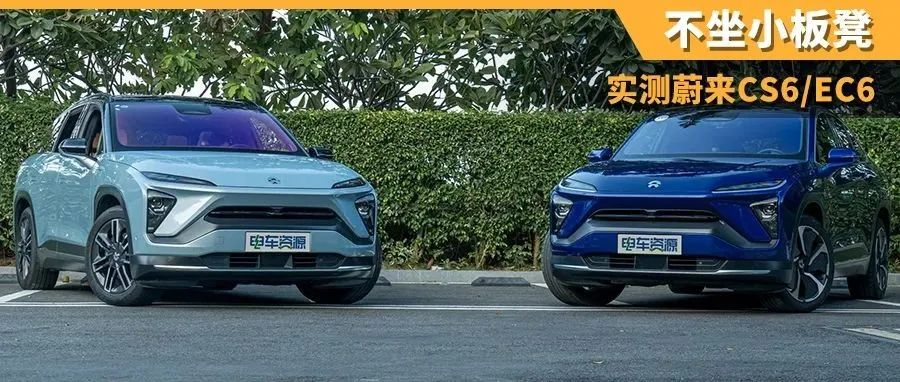Author: Dashi
For most consumers who purchase four-door cars, the space and comfort of the rear seats are definitely important parts that need to be understood. In terms of space, we can directly let the experiencers sit on it for demonstration. Although different people’s driving postures, heights, and body shapes are different, it can already provide a relatively intuitive reference.
However, the comfort of the rear seats is not only affected by space. The size and angle performance of the seats themselves are equally important. In order to make clearer quantitative comparisons, we will not only use a tape measure to measure the cushion length and cushion height of the rear seats, but also introduce an angle meter to measure the upward angle of the cushion and the extension angle of the backrest. The data will be made into a table and summarized in our detailed seat evaluation special issue.
Get to know what a “little stool” is first?
In the era of fuel cars, we often used this term in the third row of 7-seater SUVs, which means that the seats are too low, not supportive enough for the body, just like sitting on a little stool, with thighs without support and the backrest not tilted enough. It is better than nothing.
In new energy vehicles, due to the battery pack arranged on the chassis invading part of the interior space, many cars’ rear seats also clearly have the phenomenon of sitting on a “little stool,” and the low-slung sedans are more obvious.
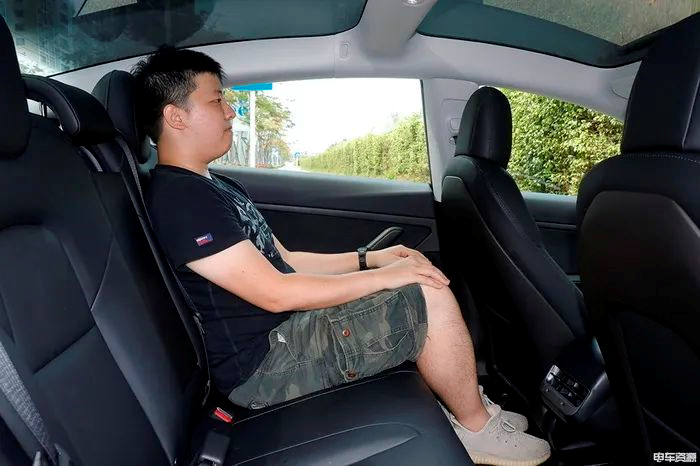
For example, the Tesla Model 3, which is basically targeted by all new energy vehicles, due to the slanted body type and the thick battery pack on the chassis, has a more obvious “little stool” phenomenon in the rear seats. The overall height of the cushion is low, and the backrest is not so well-stretched, causing a poor riding experience in the rear seat.

Similarly, the Tesla Model Y, although also from Tesla, has a larger overall size and a higher body, so although the battery is the same, the riding experience in the rear seat is obviously more comfortable. However, we can still see that the cushion length is short and cannot fully support the thighs.
It is worth mentioning that the “little stool” phenomenon in new energy vehicles is not directly related to whether the model is “oil-to-electric” or not. For example, the Model 3 in the above picture is a serious pure electric platform. Although the geometry C below is “oil-to-electric,” the space layout and design are relatively good, so it can also obtain a good riding experience.

With the advancement of battery technology, the thickness of future battery packs will become thinner and thinner, and I believe that this “little stool” phenomenon will gradually improve in the future.
Test Object of This Issue: NIO ES6/EC6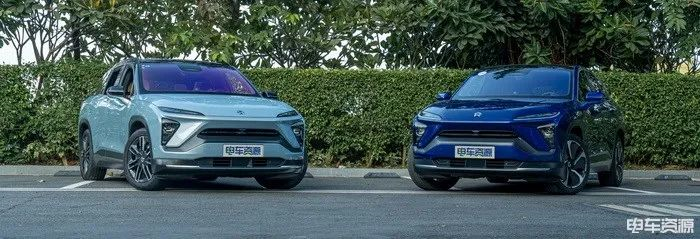
EC6 is actually the coupe version of ES6, which are the second and third models under the NIO brand. Both are positioned as mid-size SUVs, and their body sizes are as follows:
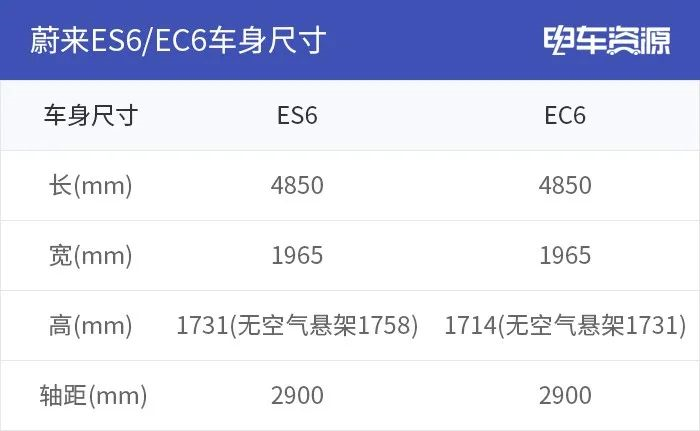
The seat shape of the two cars is the same, with only differences in the materials due to different configurations. The seats are generally thick, with slightly harder fillers, and comfortable for long-term driving. The lateral support on the back is also quite good.
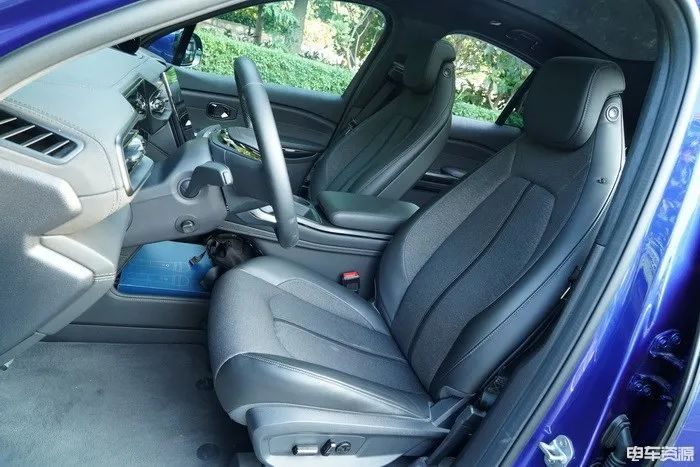
The driver’s seat of all models is equipped with 12-way electric adjustment, with seat memory, steering wheel memory and seat heating. Seat ventilation is only standard on the ES6 Signature model, and all other configurations require the Comfort Package worth 7500 yuan, which also includes steering wheel heating, rear seat heating, intelligent fragrance, and LED door sill welcome lights.
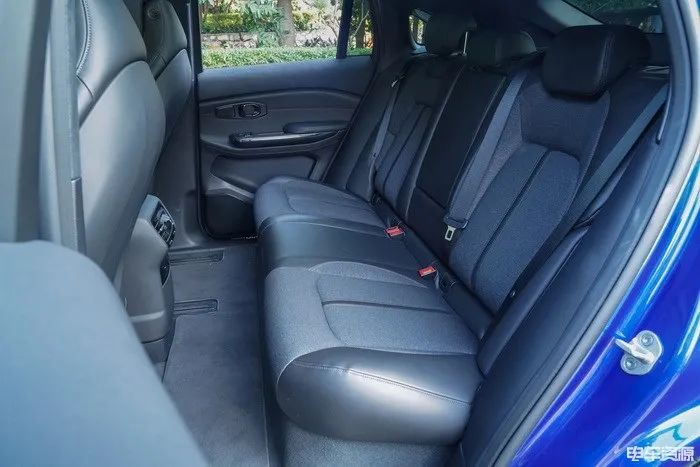
The rear seats are also thick, equipped with three independent headrests, and the central console is completely flat.
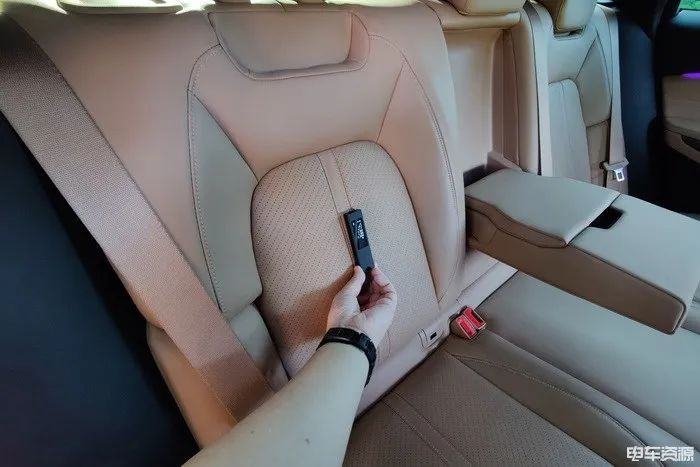
In terms of the backrest angle and specific dimensions of the seat, we used a laser angle finder and tape measure to measure the length, angle, height and lateral width of the rear seat cushion and backrest.
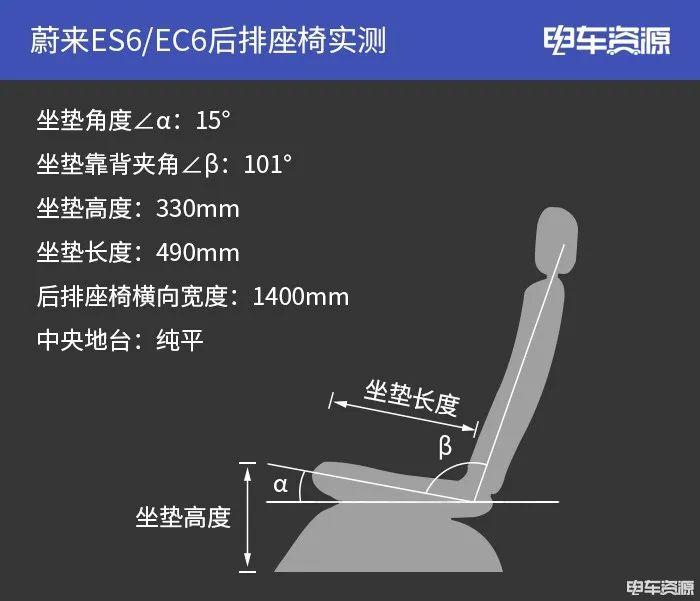
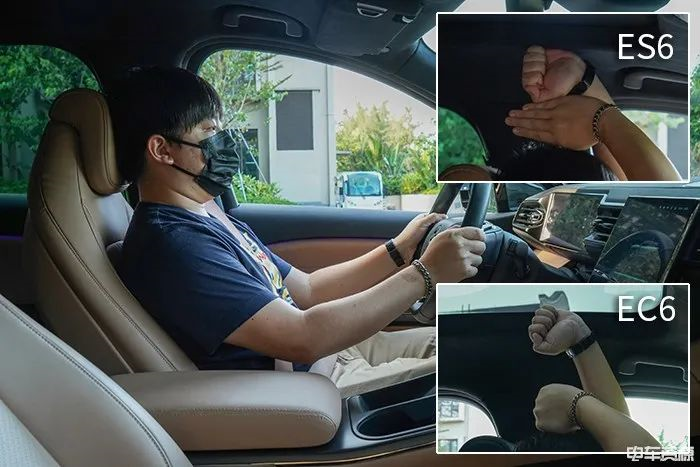
The length of the front seat cushion is 510mm, and it can be independently adjusted to support the thighs. After adjusting the front seats to the lowest and suitable driving position for my height of 174cm, there is still a fist and four fingers space remaining in the ES6, while the EC6, with a panoramic sunroof without a sunshade (the ES6 has a full sunroof with a sunshade), has even more exaggerated headroom.
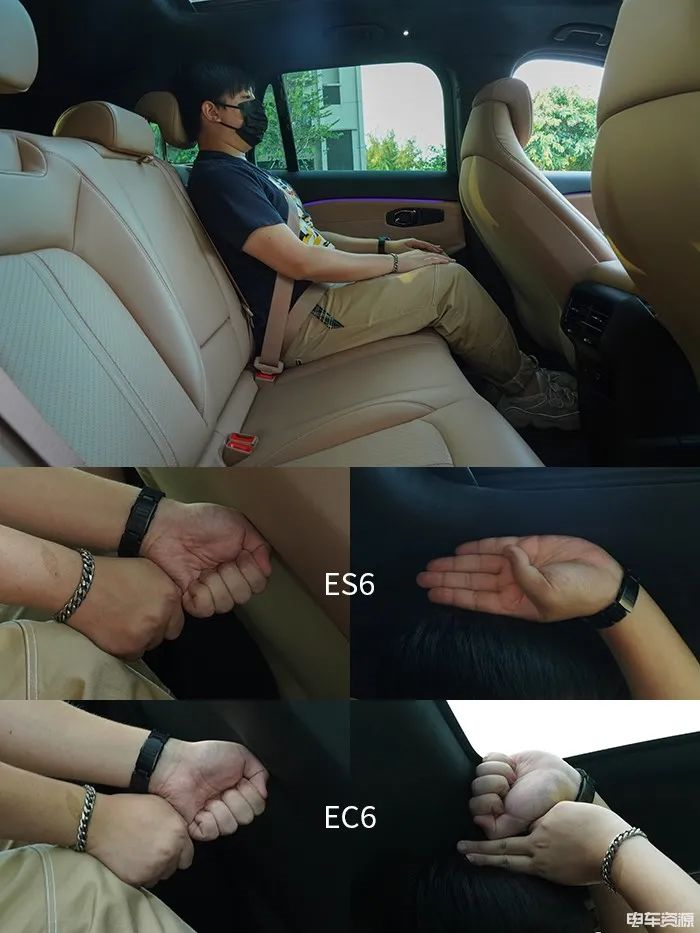 Same as the front row, the leg space of the two cars is completely the same, while the head space of EC6 is larger than that of ES6. However, for an SUV of this size, such space is not particularly outstanding. The rear seats are fixed and non-adjustable, which is a bit regrettable. However, the cushion length, height, backrest angle, etc. are all relatively suitable.
Same as the front row, the leg space of the two cars is completely the same, while the head space of EC6 is larger than that of ES6. However, for an SUV of this size, such space is not particularly outstanding. The rear seats are fixed and non-adjustable, which is a bit regrettable. However, the cushion length, height, backrest angle, etc. are all relatively suitable.
Based on the data and actual experience, the riding experience of the NIO ES6/EC6 models is quite good. With a width of 1400mm and a fully flat central console, even with 3 passengers, good comfort can be ensured. The only regret is that the rear seat backrest cannot be adjusted. If it can be a bit more “recline”, it will score more points.
Summary
This is the first time we have conducted data testing on the rear seats of new energy vehicles, but due to manual measurements, there may be certain errors, and the evaluation is also based on my personal subjective experience (height 174cm), so the data is for reference only. However, we will try our best to ensure that future tests for all models will adopt the same method, so there is still value in horizontal comparison.
Overall, each driver and passenger have different heights and body types, so whether it is suitable for oneself still requires personal experience.
This article is a translation by ChatGPT of a Chinese report from 42HOW. If you have any questions about it, please email bd@42how.com.
